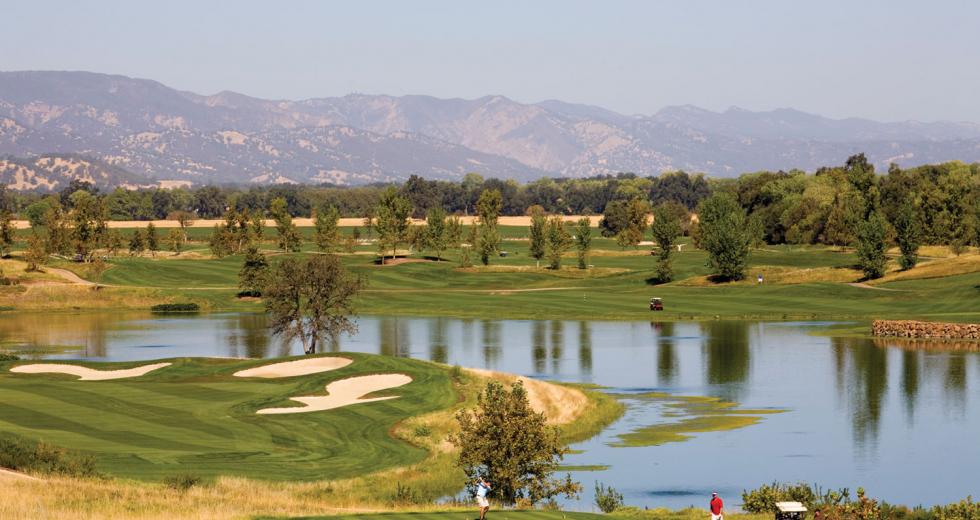Red Hawk Casino opened in December, just weeks after economic woes sent the stock market plunging.
The launch of the new venue just off Highway 50 coincided with a sharp drop in gross gaming revenue at Nevada’s Lake Tahoe casinos, and California casinos also felt the sting as gamblers gave Red Hawk a try.
The economic downturn hit California even harder than other states and slashed gambling revenue to a far greater extent than in previous slumps. Growth in Indian gaming revenue for 2008 slowed to a crawl nationwide, and in California it fell by more than 5 percent.
That’s an unprecedented reversal for a market that more than quadrupled gaming revenue from 2001 to 2006. Indian casinos don’t discuss financial results, but some in the industry say there are individual properties down by a lot more than 5 percent. Fitch Ratings projects the deterioration in revenue will continue well into 2010.
The downturn has forced casinos to take steps that would have been unthinkable a few years ago, from laying off workers to delaying or postponing expansion projects. Now, some who study or work in the gaming industry are raising questions about whether the casino market in California is nearing maturity or even saturation, making those days of consistent double-digit growth a fond memory.
“I think there is a saturation point, and I think we’re getting close to it,” says Rich Hoffman, chief executive officer of Jackson Rancheria. The Jackson Rancheria Band of Miwuk Indians owns and operates the hotel and casino that bears the tribe’s name.
With more tribes pushing for approval of gambling and state officials hungry for more revenue, there’s pressure to add to the 58 Indian gaming venues in California. “I think we’re getting close to the question of, ‘How much is enough?’” Hoffman says. “I’m not sure how to resolve that.”
The market “certainly is getting close to maturity even without the tough economic times that we’ve had,” says Bill Eadington, a professor of economics at the University of Nevada, Reno, and director of its Institute for the Study of Gambling & Commercial Gaming. Nevada exports most of its gambling losses when tourists go home, but Indian gaming in California and similar markets tends to be far more local, he says, which can create conflict as competition intensifies.
Markets where gaming is introduced typically experience several years of rapid growth in revenue and high profitability, but those flatten out as the market matures, he says. Venues begin to compete for customers and have to spend more on marketing, amenities and gambling winnings to stand out. “I think we’re going to see more and more tribal competition,” Eadington says. “When you add a new casino, it will grow the market, but it also cannibalizes other casinos.”
Others say that situation is still years away, and there’s still plenty of room for gaming to expand in California and the Capital Region.
“I don’t necessarily subscribe to the theory that there’s going to be a smaller pie,” says Doug Elmets, spokesman for Thunder Valley Casino in South Placer, who also works with Jackson Rancheria. “We’ve got 5 million people within a 100-mile radius of Thunder Valley, many of whom have never experienced gaming. That’s not a mature market; that’s a ripe market.”
Says Peter Fordham, general manager of Red Hawk Casino: “We believe this is a strong, resilient market with plenty of business to go around.”
The National Indian Gaming Commission region that covers California also includes one casino in northern Nevada. This region has gone from 26 Indian gaming venues in 1995, most in remote rural areas, to 39 in 2000 and 59 last year, including Thunder Valley near Lincoln and Red Hawk in Shingle Springs.
Although the proliferation has slowed, proposals are moving forward for more casinos, including venues close to the Bay Area and the Enterprise Rancheria’s plan to put 1,700 slot machines and 170 hotel rooms on 40 acres near Sleep Train Amphitheatre in Yuba County — less than 25 miles from Thunder Valley. Backers of those nascent projects see plenty of room to grow, too.
“There’s a real untapped market for hospitality and retail” in
the Yuba-Sutter area, where economic studies have shown some $250
million a year “leaks” away to restaurants and other businesses
in neighboring counties because the demand can’t be met locally,
says Charles Banks-Altekruse, a spokesman for Enterprise
Rancheria.
“When you add a new casino, it will grow the market, but it also cannibalizes other casinos.”
Bill Eadington, director, Institute for the Study of Gambling & Commercial Gaming
“Market studies indicate the tribe still can capture its share,” adds John Maier, an Oakland attorney who works with Enterprise. “We’re not worried about saturation.” The Butte County tribe, which has some 800 members, is seeking federal approval to take the Yuba County land into trust, one of several hurdles remaining before the project can move forward.
The stakes, and the rewards, are enormous.
Although Indian gaming continues to grow nationwide, the gross gaming revenue for fiscal year 2008 was up just 2.3 percent from the prior year to $26.7 billion. The growth rate had topped 10 percent just two years earlier.
Nearly 28 percent of that 2008 revenue came from California, but the Golden State saw gambling revenue hit even harder, according to the National Indian Gaming Commission. In fiscal year 2008, gross gaming revenue for the local region fell more than 5 percent year-over-year, from $7.8 billion to $7.36 billion. The commission reviews audited financial data from each tribe but reports only aggregate numbers.
The Capital Region casinos contacted for this story reported steady customer traffic but said patrons spent less. That matches the trend seen nationwide. Most blamed the economy for much or all of the decline in business.
“Based on the economy we’re seeing, we’re absolutely meeting our expectations,” says Fordham, of Red Hawk.
Lakes Entertainment Inc. of Minnesota manages Red Hawk under contract for the Shingle Springs Band of Miwok Indians. Lakes reported in early August that Red Hawk was seeing disappointing revenue from slot machines and continuing to trim staff, but it would not provide staffing numbers. In May, the company said Red Hawk had 1,500 full-time-equivalent workers, down from more than 1,700 when it opened.
Fordham said in late August that staffing was at 1,600. Some of the job changes reflect a normal period of adjustment as managers get the feel for patron demands and preferences, he says. “This is absolutely what we expected to happen.” Red Hawk still plans to expand from 75 game tables and 2,122 slot machines by adding a hotel, entertainment venue and additional games, but it’s too early to say when, Fordham says.
Although Red Hawk sees the Sacramento metro area as its prime market, in June it began a marketing campaign in the Bay Area. Others in the region have done the same.
“We’re doing more marketing and promotions,” says Cean Burgeson, communications manager for Cache Creek Casino Resort in Yolo County near Brooks. There are more coupons and offers for the golf course and other amenities, and promotions have become more frequent. “Where we used to do one per quarter, now we’re doing two or three; where we used to leave a little bit of time in between promotions, now you’ll see a new one start soon after another ends,” he says. “We’re shifting to cash prizes rather than a car giveaway or other luxury items.”
Staying steady at around 2,400 workers, Cache Creek Casino Resort
is the largest private employer in Yolo County.

Cache Creek is keeping a close eye on labor costs but hasn’t laid off employees in the past year. Staying steady at around 2,400 workers, it is the largest private employer in the county. There was even some hiring in January with the opening of a clubhouse for the resort’s year-old 18-hole championship golf course.
The casino’s rural location and its “local” market — it draws more customers from the East Bay than from Sacramento, and the tribe keeps a close eye on potential Bay Area competitors — made it clear early on that Cache Creek needed to look for ways to differentiate itself. That’s behind the push to convert the property, which started as a bingo hall, to a destination resort. The golf course and 200-room hotel are part of that effort, and so is a planned expansion to add more than 400 hotel rooms, 27 hillside “casitas,” three swimming pools and a 62,000-square-foot events center.
“The tribe wants us to be a first-class destination resort,” Burgeson says. “If we could build this thing tomorrow, we’d break ground.”
Thunder Valley already has. But when the economy slumped in late 2008, the United Auburn Indian Community also tapped the brakes, temporarily halting work on an expansion and retooling the plans. Construction resumed this spring.
“We’ve got 5 million people within a 100-mile radius of Thunder Valley, many of whom have never experienced gaming. That’s not a mature market; that’s a ripe market.”
Doug Elmets, spokesman, Thunder Valley Casino
“They didn’t want to overbuild for the market,” Elmets says. What had been planned as a 23-story hotel is now 15 stories, and a 5,000-space parking deck was downsized to 3,700. A new contractor is handling the work, and plans for a separate performing arts center were shelved.
Thunder Valley also laid off about 100 workers though many were hired back for other positions, Elmets says. Staffing is about 1,900 with about 500 additional jobs created by the hotel construction; 300 or so will be hired when the hotel opens. A top-quality hotel is needed in the region, he says, and will make it easier for the property to attract patrons from San Jose and the rest of the South Bay. “That’s a trek for a day trip.”
Jackson is upgrading some of its hotel and gaming space but not planning any expansion for now. It also closed its concert venue in part because of concerns about fire codes.
Hoffman says Jackson “did a lot of soul-searching four or five years ago” about its brand, the personality of the casino and the kinds of clients it attracted. “We recognize that our brand is a little different. We’re a value property. We’re the kingdom for the common man, and we’ve positioned ourselves that way.”
That includes keeping the overhead low and giving back more winnings to customers so the same cup of quarters lets them play longer than they would at a casino with tighter slots. Jackson recently slashed a promotion to bring in patrons by bus and will apply the cash it saves to enrich its programs for loyal repeat customers.
The positioning “puts us in a very good spot” financially, Hoffman says. “Based on some of the anecdotal evidence, I think we may have fared about the best out of the Northern California casinos.” He wouldn’t disclose finances but said revenue at Jackson had been roughly flat year-over-year until around June and down by single-digit percentages for June and July “while other properties were down by double digits.” No other local casino would comment on that assertion. Jackson, Hoffman says, has typically seen annual revenue rise by double-digit percentages since the 1980s.
It’s hard to gauge how much of the gaming decline reflects increased competition and how much the broader economic downturn. Whether a mature market, the downturn or both caused the reduced revenue, the response has been increased marketing and more attention to costs.
The other local casinos said the December 2008 opening of Red Hawk reduced their attendance, but only temporarily and briefly.
Gross gaming revenue was already down 4 percent in South Lake Tahoe casinos and 6.9 percent in Washoe County (including Reno) for the year ending June 30, 2008, according to the Nevada Gaming Control Board. It took a steeper dive after Red Hawk opened — revenue in South Lake Tahoe was off 4.7 percent in November 2008 and almost 29 percent in December, the first month of operation for Red Hawk. For the full year ending June 30, 2009, Tahoe gaming revenue was down 17.4 percent from the prior year.
Both Elmets and Hoffman suggest the problem is less in a finite customer pool and more in slow reaction by the Northern Nevada casinos.
“When faced with competition, you need to modify your business practices,” Elmets says. “You cannot, in any business, rest on your laurels.”
Measuring a secret
The economic impact of Indian gaming is huge — and almost a
complete mystery.
Casinos in California employ thousands of people and, in some cases, quickly become the biggest employer in their counties. They contribute to thousands more jobs through contracts for everything from hotel construction to dry cleaning uniforms to supplying vegetables for the buffets. They pay millions to local governments in lieu of taxes and to the state under terms of the compacts that govern their operations.
But they are owned by tribes, sovereign nations that don’t disclose revenue or spending, and much of their impact is ill-defined and hard to study.
“It’s a really important question, and it’s one that needs research,” says Terri Sexton, a professor of economics at Sacramento State who has studied the effects of casinos on local government finances but has put additional work on the back burner because reliable data is so scarce.
Definitions of economic impact also complicate things. Do you count the value of a meal eaten on the way home from a casino? What about the costs of problem gambling? Did crime (and its costs) go up because of casino development, or would any development produce the same increase?
The calculations become even more complex as tribal businesses evolve. The Yocha Dehe Wintun Nation has some 8,000 vendors, including those who supply the tribe’s Cache Creek Casino Resort and those who clean an office building it owns in Illinois, says tribal spokesman Brent Andrew. But would the tribe own the building without the casino revenue?
Any analysis also should factor in local investments by tribes that are a part of the community where the casino is built, says Jerry Levine, a partner in Los Angeles with the law firm Holland & Knight, who has represented tribes over the past 20 years. Tribe members often live nearby and may attend the same church or patronize the same businesses as their customers and neighbors.
“They’re not there to take something out of it and run away like some private investment company might do,” Levine says. “They’re in it for the long haul.”
Recommended For You

Back in Session
Academy-style learning targets at-risk students
The shade of the warehouse does little to quell the triple-digit heat. Still, Thomas Nesbit, 21, and Jared Smedly, 22, volunteer their afternoon to construct a picnic table from scratch.

Off the Reservation
A new bet on an old law
With fewer discretionary dollars in their pocketbooks and more sensitivity at the gas pump, recession-era gamblers want to spend their quarters closer to home.



